A BIRTHDAY SALUTE: The celebrated Mr. K tours the world of a comics visionary, who was born 109 years ago…
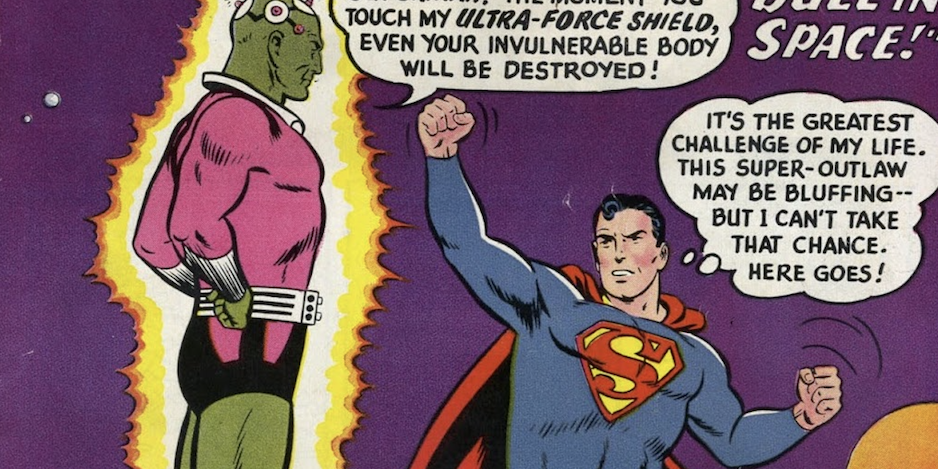
—
UPDATED 4/25/24: The late Mort Weisinger was born 109 years ago, on April 25, 1915. Perfect time to “reprint” this 2022 column by Paul Kupperberg. Dig it. — Dan
—
By PAUL KUPPERBERG
It was a surreal moment in 1978, early in my career in comics when, as the assistant to DC Comics’ public relations director, I was assigned to write the company’s official obituary for Mort Weisinger (April 25, 1915 – May 7, 1978).
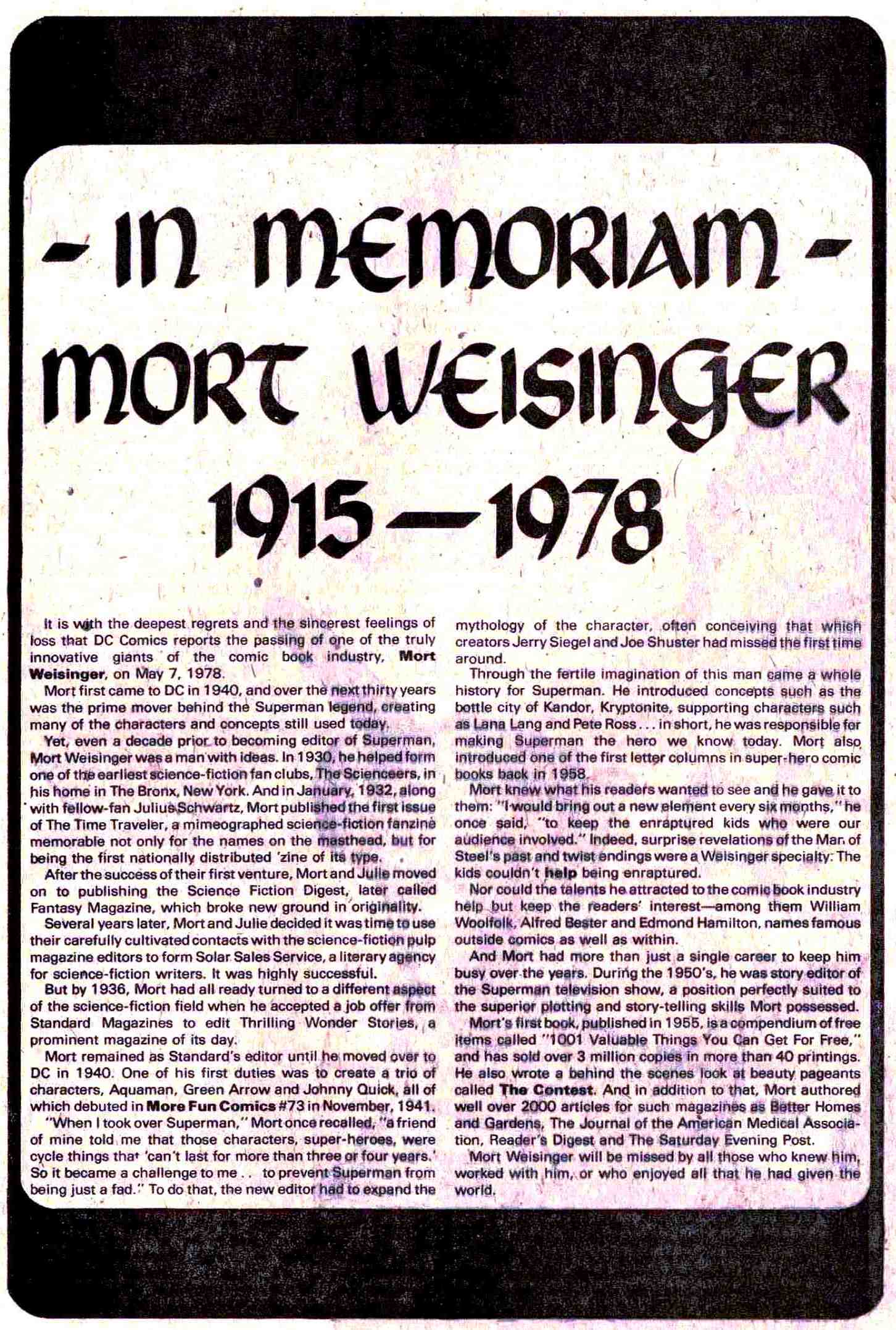
Mort Weisinger wasn’t the reason I fell in love with comics, but his editorial reign on the family of Superman titles — Superman, Action Comics, Adventure Comics, Superman’s Girl Friend Lois Lane, Superman’s Pal Jimmy Olsen — was a major factor in developing my love for the medium in general and for Superman in particular (as well as in coming up with concepts that would later fuel my budding comics writing career).
And Weisinger, as I was to later learn, had planned it to happen from the start!
As a (then) 40- or 45-year-old man, Mort knew he could only guess at what his 8- to 13-year-old audience wanted to see in a Superman story. Or he could ask them. His son Hendrie was 7 years old in 1955 and in a 2019 interview on Comic Book Historians, recalled how his father depended on him as a springboard for ideas:
“His job as story editor of Superman, in many ways, I was his editor. Because every single morning, he would wake me up, and it would always be the same, ‘How’s this for a cover?’ or, ‘How do you like this situation?’ He would describe a situation that Superman is in or with Lois Lane.” Mort would also hand out comics to the neighborhood kids and solicit their opinions and ideas for Superman.
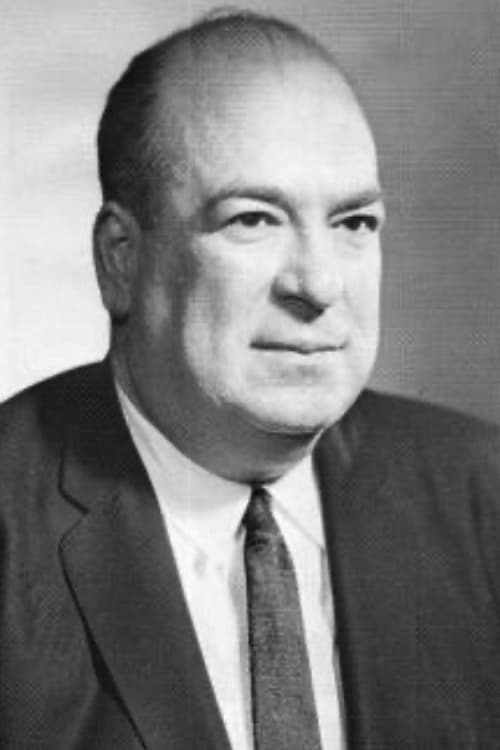
One of the elements of keeping his titles fresh and the readers interested was by continually adding new elements to the Superman mythos. Mort’s most important contribution to the character was the introduction of the feeling of family into the series. At first, Superman was the sole survivor of his people, alone in the universe, until the writers started to coalesce a little “work family” around him at the Daily Planet with Lois, Jimmy and Perry. Then, Superman traveled back in time to Krypton and met his actual family, which led to…
Well, therein lies this column! Here then, MY 13 FAVORITE MORT WEISINGER SUPERMAN FAMILY INNOVATIONS:
—
Superman #61 (Nov. 1949). Kryptonite was a creation of the 1940s Adventures of Superman radio program and made its debut in the comics in Superman #61 under editor Dorothy Woolfolk. But it was Weisinger who brought the rainbow to the deadly glowing remnants of destroyed Krypton: Red K, with its unpredictable effects on Superman (Giant Ant-head! Lion-head!) was introduced in Adventure Comics #252 in 1958; Blue K, which effects only Bizarros, in Superman #140, and White K, which kills plant life, in Adventure #279, both in 1960; Gold K, which can permanently erase a Kryptonian’s superpowers in Adventure #299 (Aug. 1962), et cetera, et cetera, so on and so forth.

—
Superman’s Pal Jimmy Olsen #1 (Sept./Oct. 1954). Like kryptonite, the character of Jimmy Olsen came out of the 1940s Adventures of Superman radio program, but he didn’t appear as a named character in the comics until Superman #13 (Nov./Dec. 1941). Jack Larson’s portrayal of Jimmy on the Adventures of Superman TV program promoted him in the minds of readers and viewers enough for comic book editor (and TV show story editor) Weisinger to shine the limelight on the cub reporter in Superman’s Pal Jimmy Olsen, a series that would run until 1974 and give the world Turtle Boy.
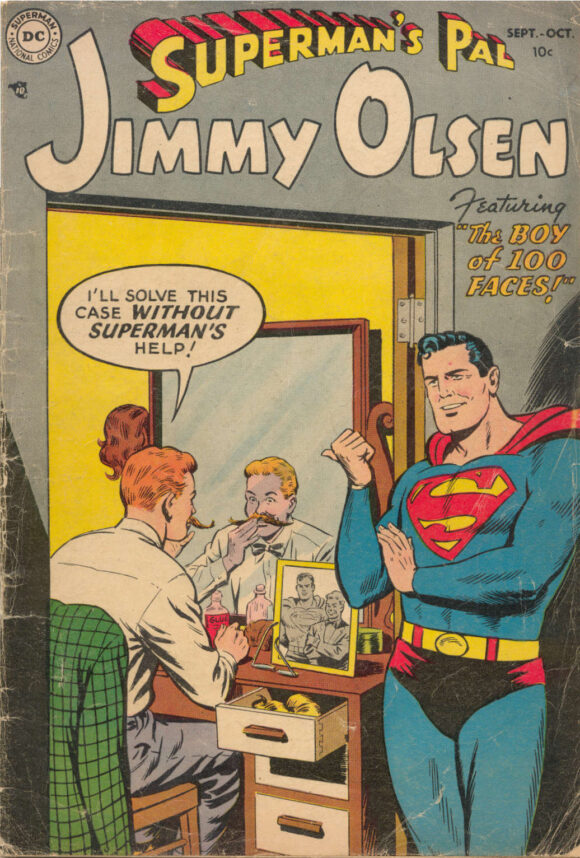
—
Adventure Comics #210 (March 1955). Superboy is reunited with his pal from when they were both puppies back on Krypton in this story by Otto Binder, Curt Swan and Sy Barry. That is, before, you know, his dad used Kal-El’s little playmate as a lab animal and blasted him off into space aboard an experimental rocket. Woof!
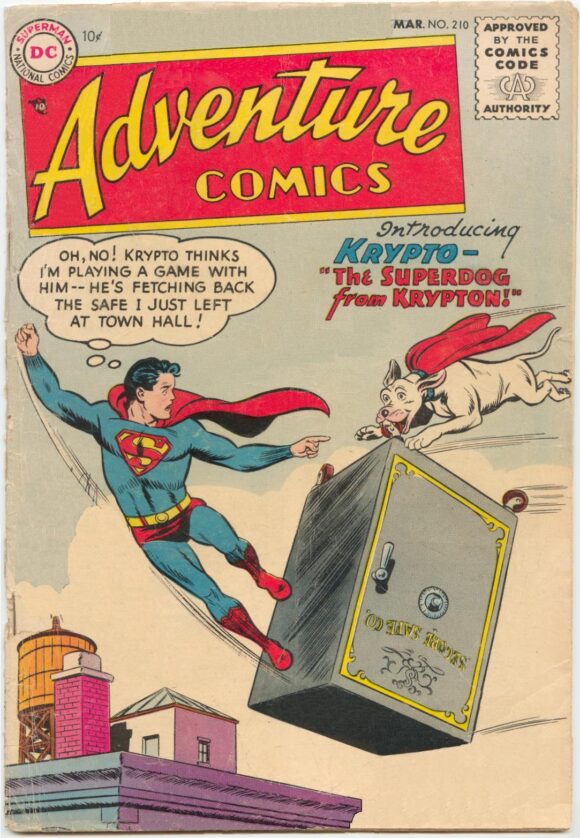
—
Showcase #9. (July/Aug/ 1957). Lois Lane had been around only a few pages less than Superman/Clark Kent himself, but it took almost 20 years for her to graduate into her own title (after this “tryout” issue). That in itself was kind of revolutionary; sidekicks and supporting characters almost never graduated to their titles (Jimmy Olsen’s 1954 series is the exception that springs to mind, besides Robin getting a solo cover feature in Star Spangled Comics in 1947), but a girl who wasn’t Wonder Woman getting her own superhero book was almost unheard of. But Lois took command of the series… except, y’know, when she was still playing second banana to Superman… and as long as she had Superman appear in some way, shape, or form on the cover of every single one of its 137 issues.
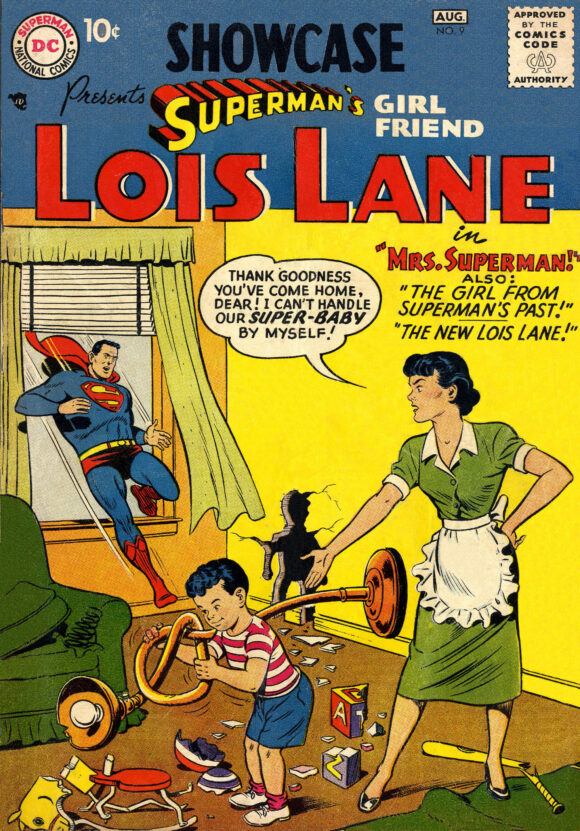
—
Action Comics #242 (July 1958). “The Super-Duel in Space” was a two-for-one bonus Weisingerpalooza: the introduction of both Brainiac and the bottle city of Kandor. Two additional items of interest: (1) at no point in the Binder/Al Plastino story is the captured city given a name, and (2) the only thing in common between the handsome, muscular Brainiac on the Swan/Stan Kaye cover and the hunched-over little gnome drawn by Plastino in the story itself is the color of their skin. I would, later on, early in my DC Comics career, delve deep into the bottled city in a 1970s Superman Family back-up series, Nightwing and Flamebird (see below).
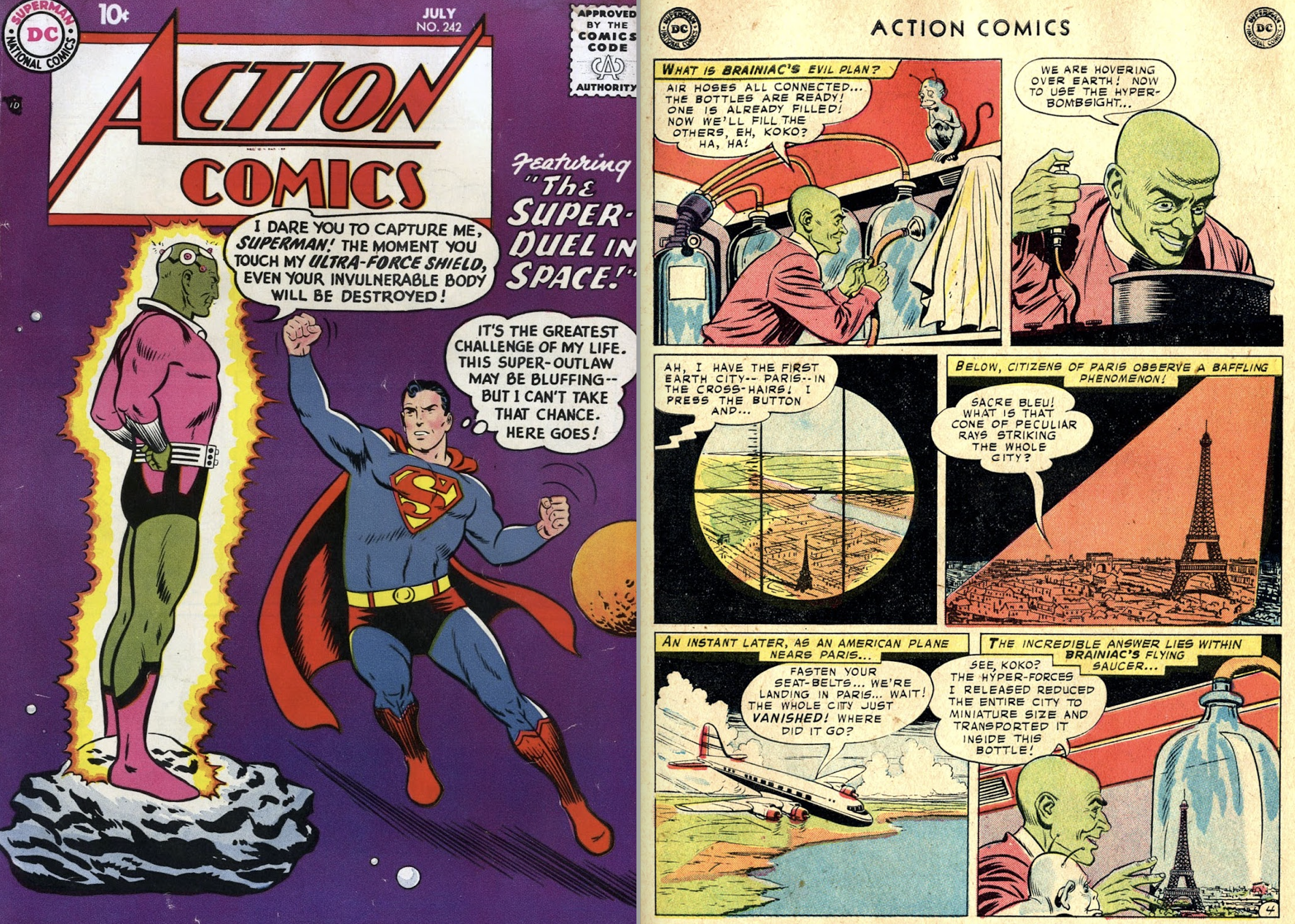
—
Superboy #68 (Oct. 1958.) Bizarro am one of worst ideas Weisinger am introduced in Superman world! Blecch! Him so ugly and stupid, Binder and Papp not want to do story unless they get paid less money! Sorry… hard not to get sucked into the speech pattern. An adult Bizarro was appearing in the Superman newspaper strip around the same time, played with the same pathos as this teen version. The “We do opposite of every Earthly thing” Bizarros would prove popular enough to earn their own “Tales of the Bizarro World” back-up feature in Adventure Comics, played for laughs by Jerry Siegel and John Forte.
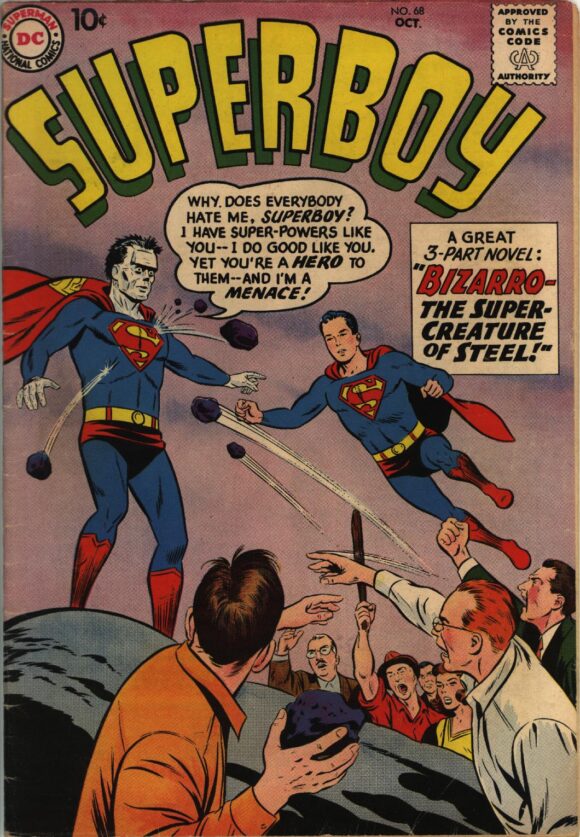
—
Adventure Comics #247 (April 1959). I don’t have to explain this one by Binder and Plastino, right?

—
Action Comics #252 (May 1959). Of all Weisinger’s attention-grabbing additions to the Superman family, the arrival of Kara Zor-El stands to me as the biggest. Created by Otto Binder and Al Plastino, Supergirl was Kal-El’s literal cousin, daughter of his father’s brother… well, you know the story. I started collecting Action Comics for the Supergirl back-ups and, almost 20 years later, took over writing her adventures in Superman Family and her own title until she was cancelled by Crisis on Infinite Earths. Bonus: Also in this issue, the first appearance of John Corben, aka Metallo!
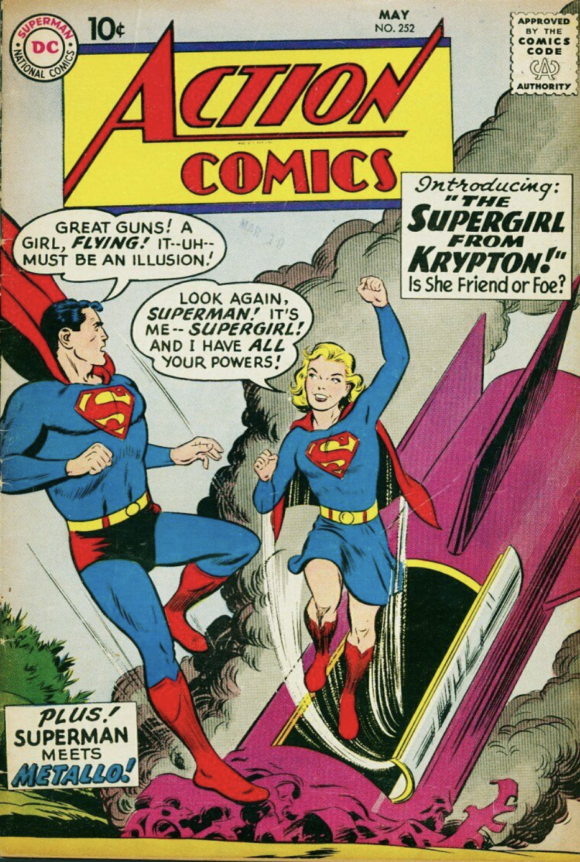
—
Superboy #76 (Oct. 1959). “The Super-Monkey from Krypton” by Binder and Papp. ’Nuff said.
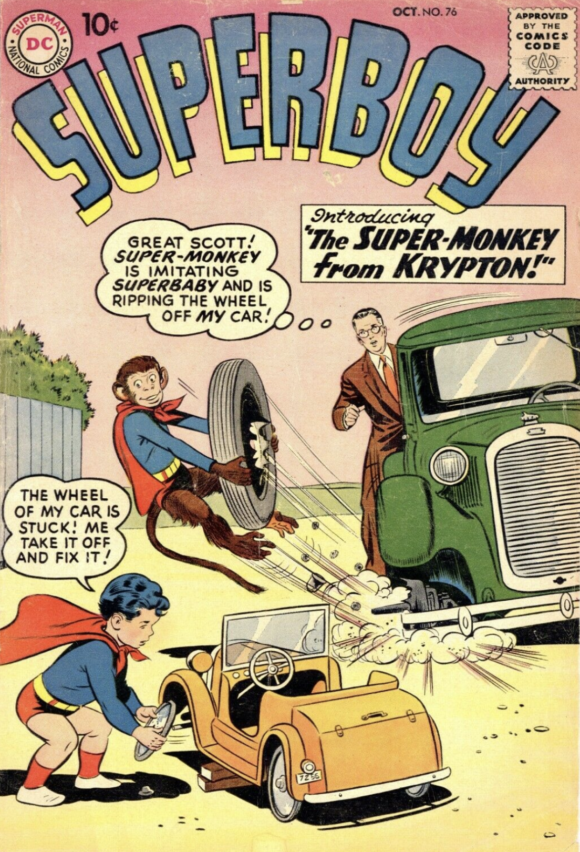
—
Superman #132 (Oct. 1959). Despite Alan Moore’s reductive response of “but then, aren’t they all” to the idea of “imaginary stories,” those tales of what-could-happen-under-different-circumstances were big deals long before the term “Elseworlds” was coined. While DC had published earlier stories positing different outcomes for their character’s lives, “Superman’s Other Life” was the first one to trumpet the alternate reality aspect of the story. Later significant Imaginary Stories include Jerry Siegel/Curt Swan’s “The Death of Superman” (Superman #149) and Leo Dorfman/Swan’s “The Saga of Superman-Red and Superman-Blue” (Superman #162). Beautifully drawn by Boring, “Superman’s Return to Krypton” would have a big influence on a project I would later write, the 1979 World of Krypton miniseries.
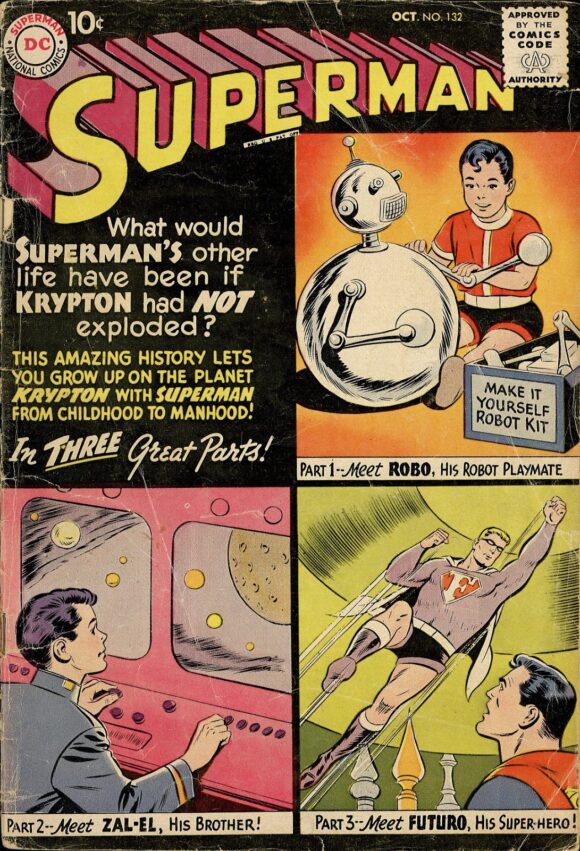
—
Superman #141 (Nov. 1960). You’ve met Kal’s cousin Kara… now meet the whole El meshpucha (that’s Family, folks). Superman’s real father, Jerry Siegel wrote this epic “3-part novel” which provided the broadest look ever at the Man of Steel’s doomed homeworld of Krypton, with art by Wayne Boring. After he’s accidentally blasted back in time, Superman finds himself stranded under Krypton’s red sun in the years before its destruction, where he meets (and witnesses the marriage of) his birth parents, and encounters actress Lyla Lerrol.
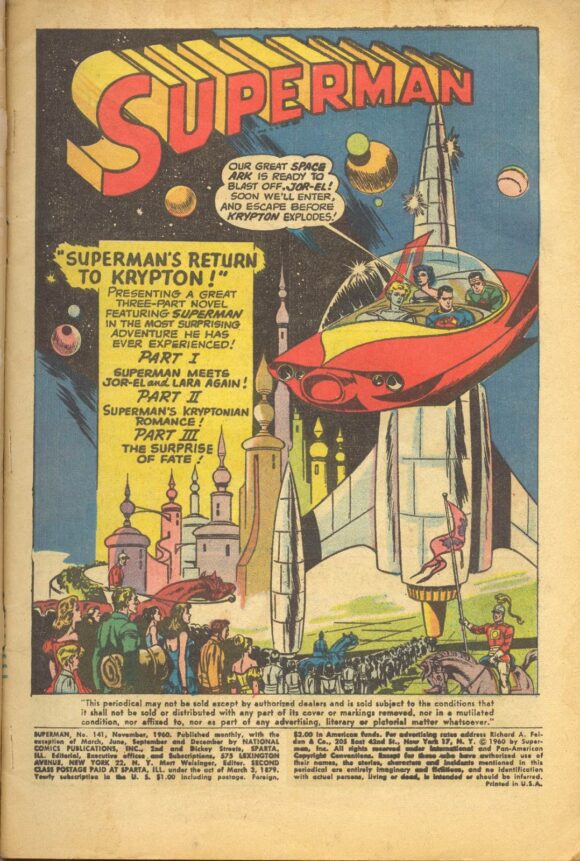
—
Adventure Comics #283 (April 1961). Thank goodness that plummeting box of artifacts landed harmlessly a few feet from a Middle Eastern archeological dig or the world would never have learned of the Phantom Zone Ray Projector! It was one of several Kryptonian weapons “we of Krypton consider… too dangerous to keep,” according to the note signed by (>Choke!<) Jor-El in the box, which Superboy finds when he opens it. Needless to say, this Robert Bernstein/George Papp tale introduced an element into the mythos that would later play an important role in the first two Superman films and even get its own eponymous miniseries.
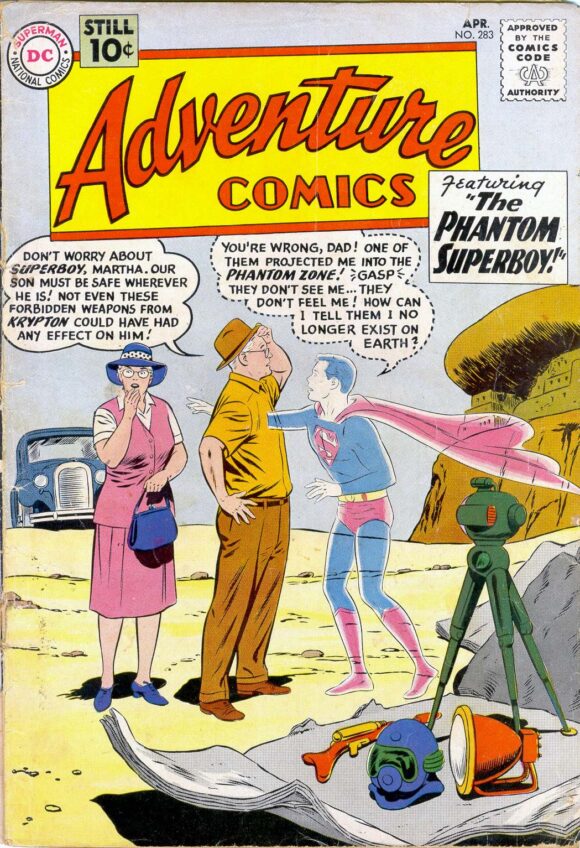
—
Superman #158 (Jan. 1963). Superman and Jimmy Olsen were the original Nightwing and Flamebird, assuming the masked identities during a visit to Kandor, taking on the names of indigenous birds, in Superman #158. In Superman #166, the Dynamic Duo of Kandor appeared again, in an imaginary story featuring the sons of Superman in the roles. Later, Superman’s cousin, lookalike Van-Zee, put on the costume, joined by reformed Phantom Zone prisoner, scientist Ak-Var (Action Comics #336) as Flamebird. In Superman Family #182, I would write the first of 12 installments of a Nightwing and Flamebird back-up series. Thanks again, Mort… and Jerry and Otto and Bob and Curt and George and Wayne and Al!
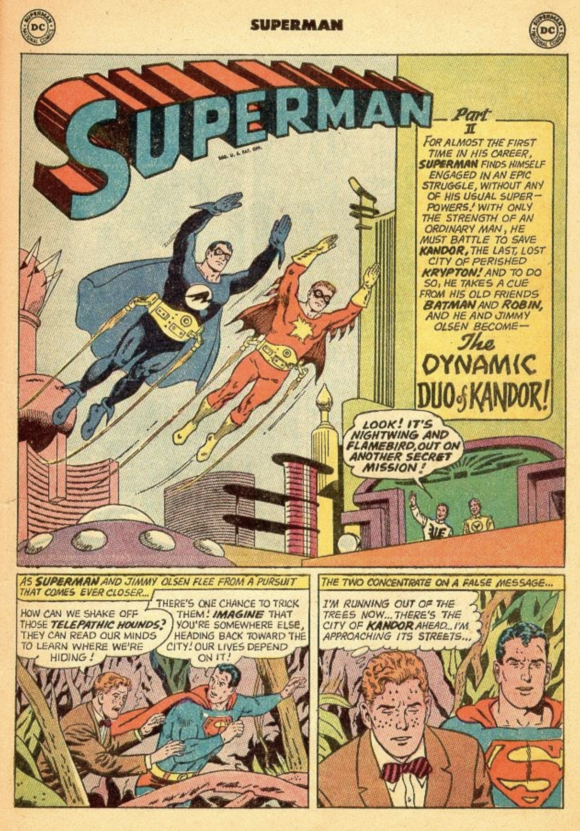
—
MORE
— PAUL KUPPERBERG: My 13 Favorite WORLD OF KRYPTON Miniseries Moments — RANKED. Click here.
— PAUL KUPPERBERG: My 13 Favorite JULIUS SCHWARTZ Moments. Click here.
—
Sure, you know Paul Kupperberg as the prolific writer of over a thousand comic books for such characters and series as Superman, Aquaman, Doom Patrol, Vigilante, Life with Archie, Bart Simpson, Scooby-Doo, and dozens more for DC Comics, Archie Comics, Bongo Comics, and others, and that he is also the creator of the series Arion, Lord of Atlantis, Checkmate and Takion, and is a former editor for DC, Weekly World News, and WWE Kids Magazine. But Paul is also the author of numerous books, including the superhero novel JSA: Ragnarok and the comics industry-based murder mystery, The Same Old Story, not to mention (but we will anyway) Paul Kupperberg’s Illustrated Guide to Writing Comics, I Never Write for the Money, But I Always Turn in the Manuscript for a Check, Direct Comments: Comic Book Creators in their Own Words, The Unpublished Comic Book Scripts of Paul Kupperberg and Son of the Unpublished Comic Book Scripts of Paul Kupperberg. You can follow Paul at PaulKupperberg.com and at Crazy8Press.com.


April 25, 2022
Lots of good stuff, here! Thanks, Paul! I love Nightwing and Flamebird. Maybe I’m just missing it, but concepts like these seem few and far between in today’s marketplace — maybe due to the serialized nature of modern comics stories.
April 26, 2024
Are you the same Walt Grogan, the actor on Fallout series?
April 26, 2024
He’s not. But he’s even cooler!
April 25, 2022
Does anyone know if gold kryptonite was ever used on anyone and if it was, could its effect be reversed?
April 26, 2022
Weisinger I think deserves some credit for introducing cross-comic-book continuity years before Stan Lee and Jack Kirby perfected the formula at Marvel. Of course, this continuity was very much confined to the walled-garden of the Superman titles, but within his titles you would see characters like Mon-El, Supergirl, the Legion of Super-Heroes, the Phantom Zone villains, etc show up in any number of Weisinger’s books.
May 4, 2022
Gold Krytonite had an effective range of two feet, and permanently removed a Kryptonian’s superpowers. In many cases, a Kryptonian who had lost their superpowers to gold kryptonite could pass similar hereditary traits to their offspring. As such, their children would not develop superhuman abilities under a yellow sun as they would have if their parents still maintained their powers. This was not guaranteed, however, and it was theorised some victims of gold kyptonite may be able to sire offspring born with natural Kryptonian abilities. In some situations it could also rob victims of their memory, as was the case with the Phantom Zone criminal, Quex-Ul. A temporary antidote was once developed that negated the effects of gold kryptonite for a short period of time. What remains unclear to me is how Superman (or whomever was the first to identify Gold K as such) first discovered its effects on Kryptonians.
April 25, 2023
Great list! I was lucky enough many years ago to stumble onto a Nightwing and Fkamebird trade at my local library. Fun stuff.
April 25, 2024
Paul I would like to throw my hat i the ring. MORT is the reason people seen my name pop up from time to time!
Let me explain.
E. NELSON BRIDWELL was working on an INFERIOR 5 story that was a parody of how comics were made! (Issue #6), MORT was the editor.
Nelson was running three pages short…if he could’ve come up with any idea on how to fill those pages.
Mort said to Nelson: “You know that pain in the ass kid, Nick who sits with you (they shared the same office) I listen to him and you know most of his ideas are good. Call him run the story by him, see what he says.”
He did and I reminded him about visitor’s day!
I saved the day!
As a reward they got Mike Sekowski to draw me and I became a part of the joke!
The rest is history.
I found out he really liked me. He arranged for me to be the tour guide for my civics class points.
April 26, 2024
Wow! I loved this stuff!
July 1, 2024
This is wonderful stuff! Thanks! And compliments on this website!
Actually The Phantom Zone originated as The Empty Doom in the 1950 film serial Atom Man vs Superman. Evidently Weisinger thought enough of it that he incorporated it into his comics.
And Supergirl was obviously inspired by Mary Marvel. Weisinger claimed otherwise but Otto Binder who co-created both characters and Kurt Schaffenberger who worked on both saw the connection.